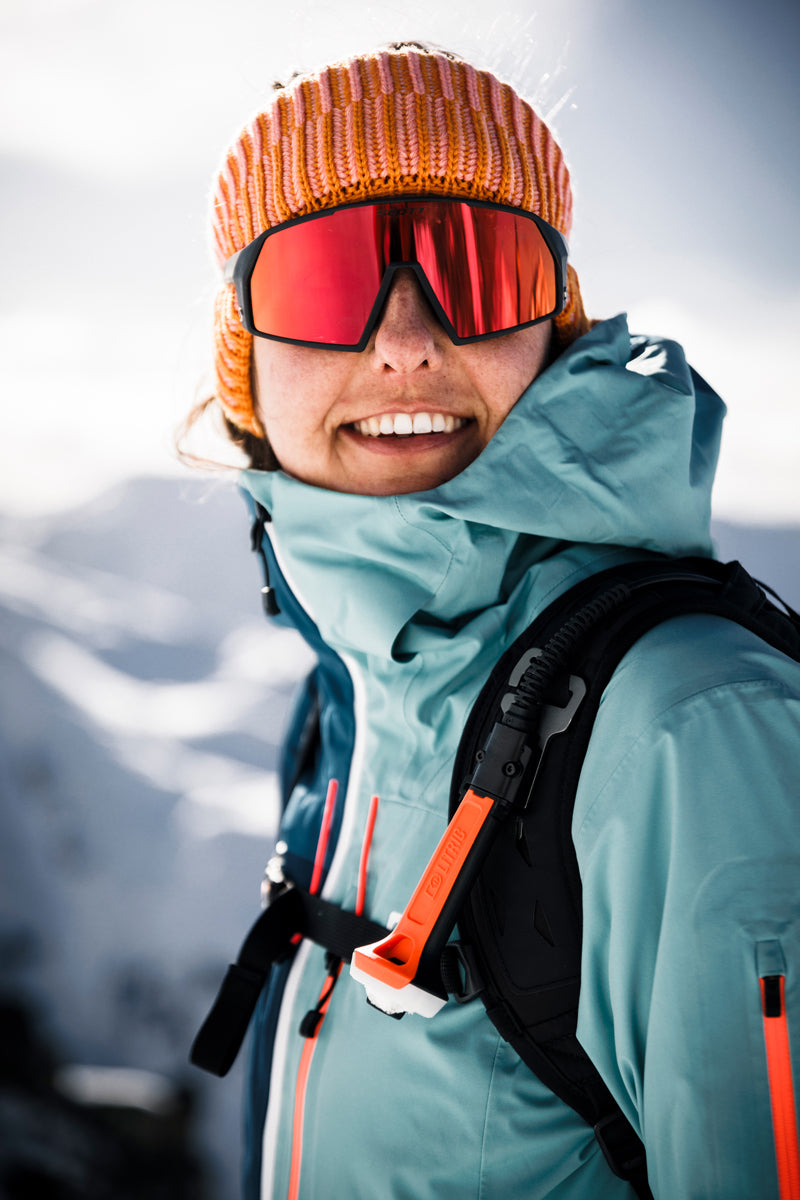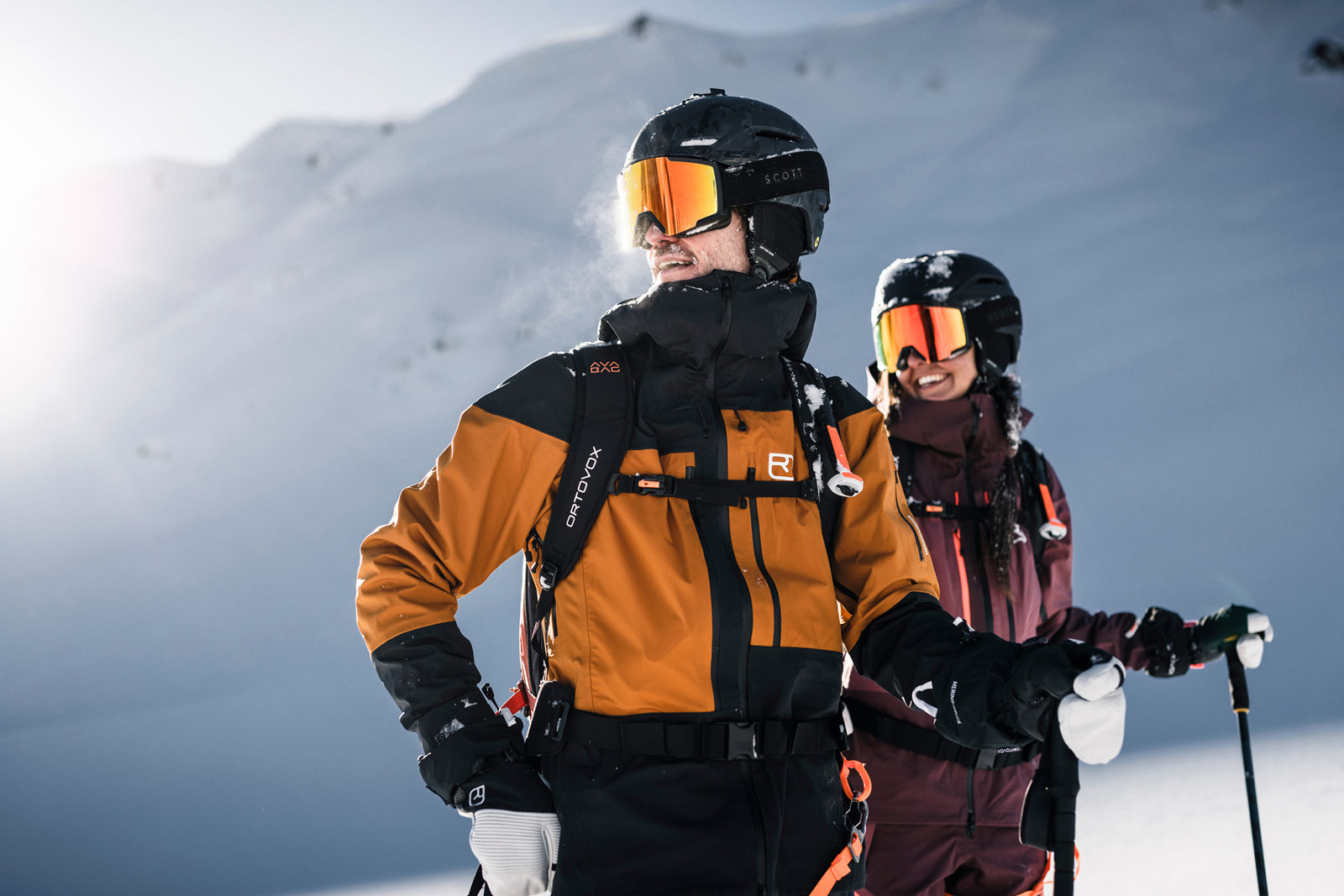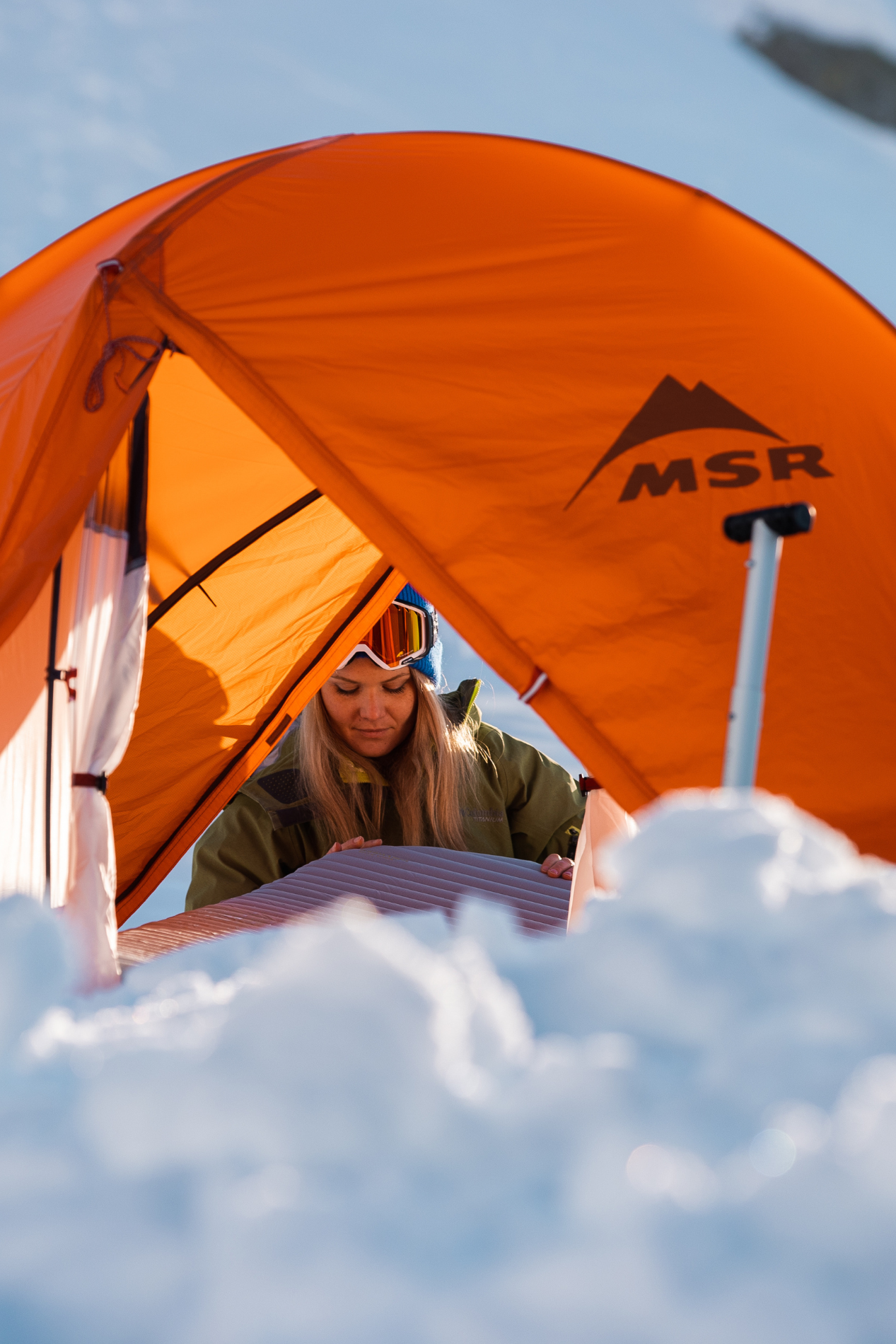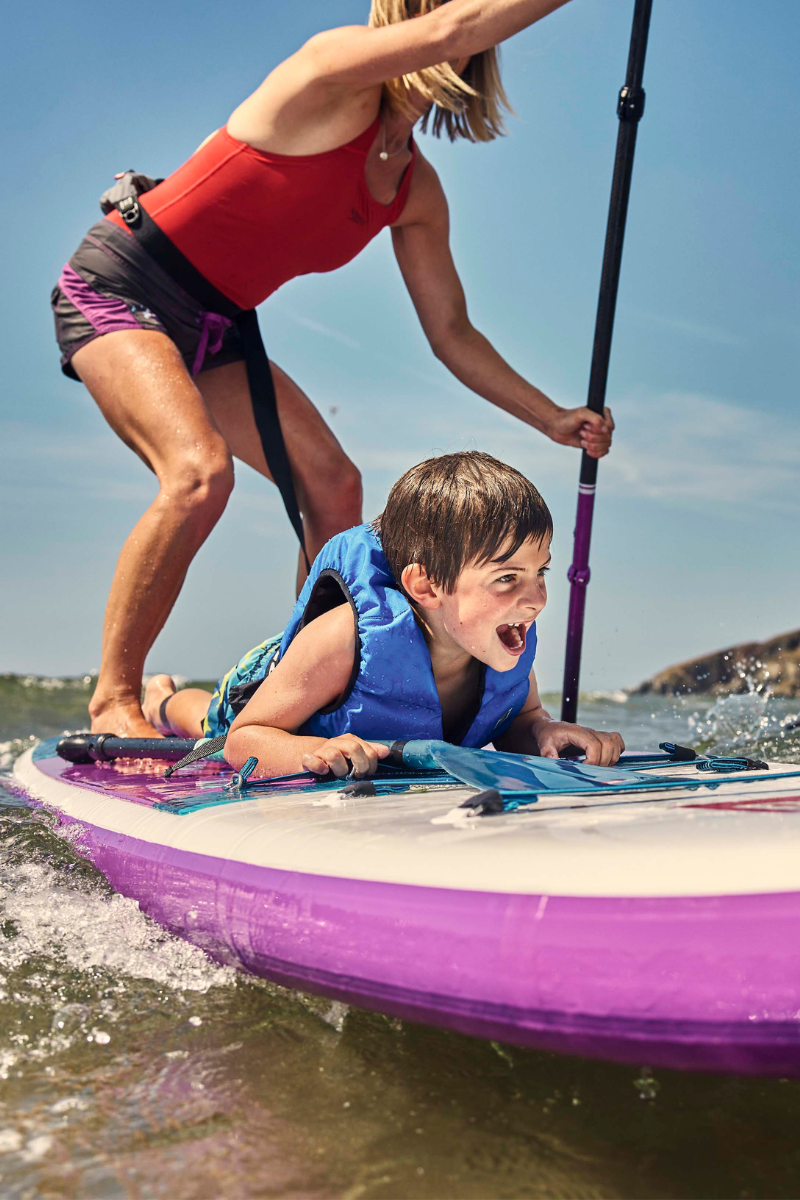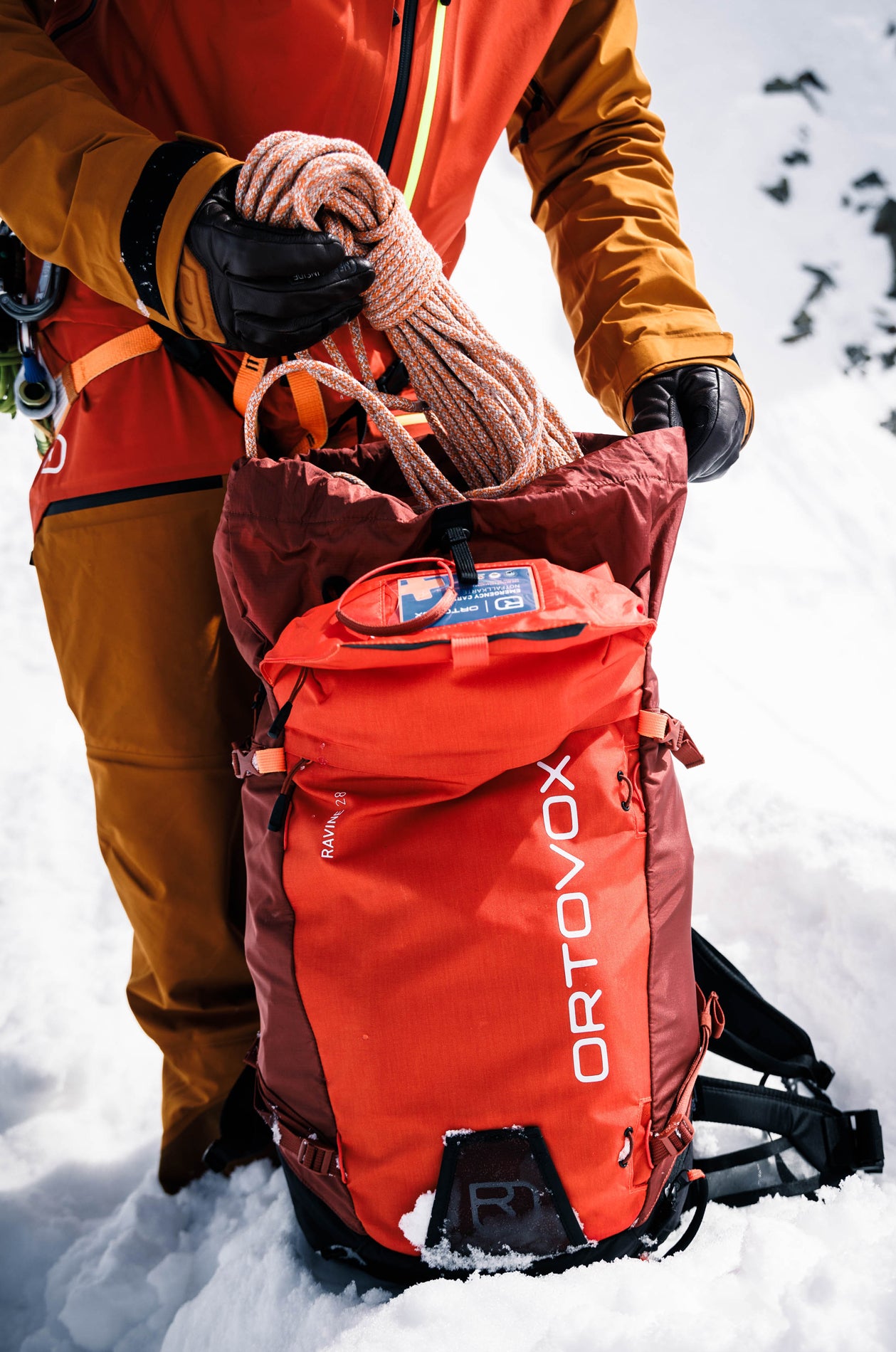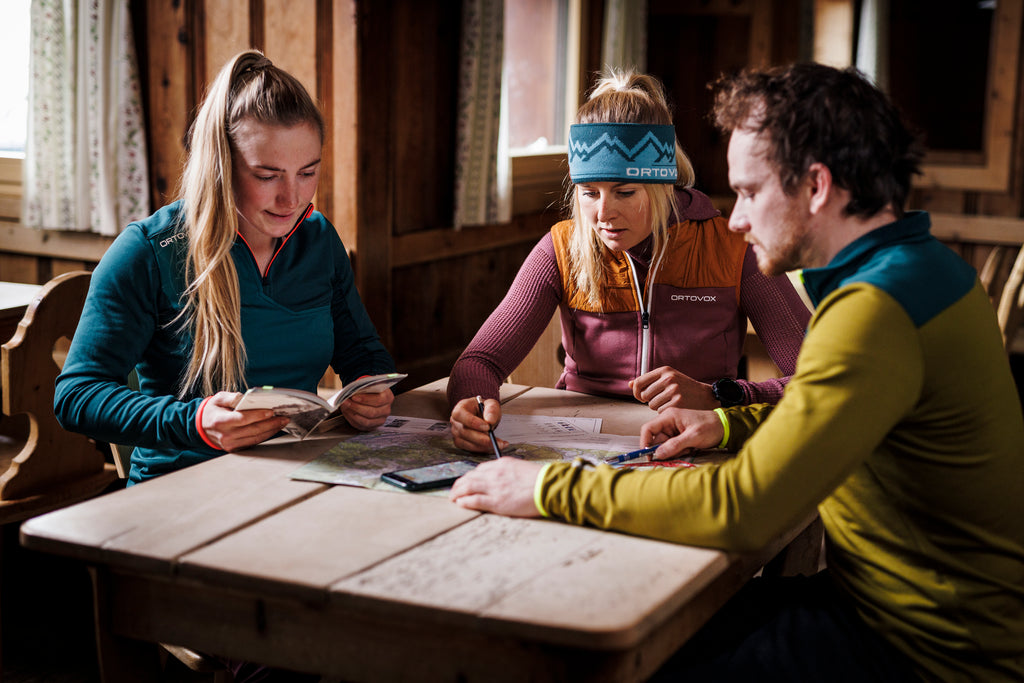As a new user of the backcountry, you can spend a lot of time searching the internet for answers about how to get started ski touring. As a backcountry store, we get questions everyday. We recently hosted a Backcountry skills clinic with Cloe from Mountain Skills Academy Adventures (MSAA), aimed at educating locals on the backcountry so they can get started on their journey this season. During this skills clinic Cloe asked the group to ask any burning questions they had related to four different topics - Location, Equipment, Planning and Skills. The questions were so good we thought everybody should see them. So here they are.
Skills
What level of skiing/snowboarding should I be before I go touring?
This depends where you are going to go skiing but generally confidence skiing in intermediate (blue terrain) in variable conditions. Which means off piste in powder, bumpy lumpy, kinda crappy conditions in resort.
Do you need first aid skills?
It's beneficial to be able to assist in first aid if this is required. When you leave the ski resort you are on your own and ski patrol are unable to help you. So if help is needed you would need to call Search & Rescue. This can take time to arrive. Making sure you have solid first aid kit - like our custom backcountry first aid kit from Canadian Outdoor Medical. This was designed by Matt Smith to include everything you should need for winter backcountry first aid. Next become familiar with how to use everything. You can start by reading this helpful blog we put together.
Do you need avalanche training?
Absolutely! It's important you are skilled at avalanche rescue if you plan to go into avalanche terrain. We recommend checking out Mountain Skill Academy & Adventure for course.
Do you need navigation skills?
You will need navigation skills but how competent depends on where you plan to go and in what conditions. Travelling in blue sky vs a white out is a totally different skill set. So as a beginner who is new to backcountry navigation, choose days where you have lots of visibility and areas that tend to get more traffic. However, just because there is a skin rack or ski lines, doesn't mean it was a smart choice. Still exercise your own judgment.
What level of fitness do I need to be at?
Generally a small ski tour would be less than less than 5km and less than 600m vertical gain. Being able to walk with a full pack uphill for an hour would be about the shortest ski tour in Whistler backcountry behind flute and into Oboe. You could practice skinning uphill for an hour on the Whistler Blackcimb uphill route with a full pack. That would be good practice for your first tour in the Whistler backcountry.
Do you need on the spot maintenance skills eg: fixing bindings/skis
Knowledge of your own equipment is important. Make sure you have the right tools to adjust your equipment like a a multi tool with the right screw bits. Putting together a repair kit can also be helpful should a breakage arise. An example kit would be. 2 x ski straps, wire cable, multi tool, fire starter (bike tire, kit, alcohol soaked cotton) spare headlamp.
Do you need mountaineering experience?
This depends on the objective but as beginner you are likely to being staying in simple terrain so mountaineering skills in not necessary. If you have previous mountaineering experience it's definitely going to be advantageous for backcountry knowledge.
How transferable are resort skills?
Incredibly transferable. When backcountry skiing you are likely to experience variable terrain. Practice skiing off the groomers as much as you can. You can also take your pack into resort and practice with that. As a splitboarder, a heavy pack makes big difference.
Do you need trip planning/emergency planning skills?
Trip planning is a cornerstone skills for backcountry travel. You can follow a trip planning guide. Mountain Skills has and awesome online planning tool, see here.
Gear
How much are you willing to invest?
Everyone has a different budget. If you are getting started you can rent for a day or two but if you start doing more than couple of days t starts to make financial sense to buy. In whistler the second hand market is thriving and you can get unbelievable deals on the facebook buy and sell. However, if you are new to the gear it can be quite overwhelming to know what is a good deal and what is not. They're are few things to think about.
- If you are getting pin bindings, your boots needs to have pin inserts.
- Be cautious of used skins, if you touch them and they leave glue on your fingers, avoid them.
- Be cautious of going too long with your skis. Look for something about nose to eyebrow height. You are better on the shorter than the longer end.
- Make sure you boot fits in the binding. Touring bindings have some adjustment but not much. Up or down size at best.
- Poles should have power baskets or you'll stabbing there snow.
- Beacons MUST be three antenna.
- Check the probe releases properly and the shovel handles moves in and out of the housing smoothly.
If you are looking to invest in new gear you an visit us in store and we can help get you set up.
What is the core avalanche kit?
Beacon, probe, shovel. If you are planning to go anywhere without cell service, I would add a satellite communication device to this list.
Is second hand avalanche gear safe?
If you have the knowledge to test whether the gear is in working condition we don't see an issue buying a probe and shovel second hand. Beacon is tough, its a crucial piece of equipment that if fails could have serious consequences. So it could be worth buying brand new to not have that risk, or rent until you can buy one.
What kind of layer should I use?
Next to skin layer: synthetic or merino. This helps which away sweat.
Mid layer: synthetic. Some kind or grid fleece like a Black diamond coefficient or warmer Ortovox Piz Badus.
For more warmth add more mid layers.
For extra warmth down puffy:
Outerwear: Waterproof and windproof. Ortovox Deep Shell
Pro Tip: If you are wearing all your layers at the start of the day, you don't have enough layers with you. Always aim to have a spare layer you don't use in case of emergency in your pack.
Should I always carry crevasse rescue gear?
You only need crevasse rescue gear if you plan to go on glaciers.
How do I learn to use a beacon?
You can learn from a professional (AST 1) and practice with friends. But don't learn from friends and practice with friends.
Can I use the same gear in resort vs backcountry?
Yes. One major difference between ski touring and resort clothing is it's usually lighter and more packable. Resort clothing tends to be more durable as its takes more of a beating. Ski touring pants also have side vents so you can dump heat on the way up.
What should be in my first aid kit?
Check out this blog.
How much food and water should I bring?
Think about how many hours you will be ski touring for an how much food you would usually have. Like a good lunch like a sandwhich. Some easy to eat snacks like trail mix, dehydrated mango, sugary sweets, chocolate almonds. And 1L of water.
What is Recco and do I need it?
You can learn more about Recco here. But in short, it's a reflective device. A searching party can use a special device to find the Recco reflector. RECCO IS NOT A REPLACEMENT FOR A BEACON. In a winter burial scenario it's typical used on for the retrieval of a body.
Planning
How many people should be in your group?
As a beginner, at a bare minimum 2. This is so if something happens, there is someone to help. However, 4-6 is ideal. The reason why is if anything happens you have more numbers to help come up with solutions and just generally more brain and power.
What will the weather be like?
Always check the weather to see what the forecast is going to be. You can check multiple forecasts, like WB weather report and snow forecast, are the most simple. Then spot wx and windy app are more in-depth weather sites. As a beginner choosing days where the is good visibility is important as navigating is tough is a white out conditions.
What time should we go?
You might be restrained to the opening and closing of ski lifts. If you are not, aim to give yourself as much daylight as possible. Being at a trail head at around 7 or 8 is a good place to start. It's also much nicer to skin up in the dark when you are fresh than it is to ski out in the dark at the end of the day when tired because you started late.
Where should we go?
As a beginner, you want to go ski touring in simple terrain. Ideally somewhere with and easy exit if you need to bail and even better if you have people around with cell phone service. Somewhere like flute and oboe are great options for first time ski touring due to its close proximity to the ski resort.
Is it important to know the previous days weather?
This is important. If you are sticking purely to simple terrain you want to try ski the best snow possible. So knowing where the freezing level is so you can try to ski the fluffiest snow. Where the wind has blown so you can avoid wind hammered aspects. How much new snow came down as fresh snow makes route finding harder and trail breaker in fresh snow is more challenging.
How much water should you take?
Pro Tip, from Cloe. She fills her thermos with hot water. This slowly gets cooler as the day goes on and she adds snow to it every time she drinks. This way she brings 1L but gets more throughout the day. A 1L Nalgene is a good place to start. Because it's cold outside you often don't drink as much but make sure you finish this throughout the day to make sure you are drinking enough water. Dehydration impairs decision making and increases fatigue which is a problem for injury risk at the end of the day.
Can I bring my dog?
Dogs are awesome to bring ski touring. Couple of things to consider. Are you in a provincial park - dogs are not allowed here. If you are a beginner you may already have many things to think about, so bringing a dog might make the day more stressful.
Which weather apps can I trust?
There is no one weather app that is the best. All weather apps use different weather models, so using different apps with different models helps you aggregate the likely hood of weather. You can check multiple forecasts, like WB weather report and snow forecast, as the most simple. Then spot wx and windy app are more in-depth weather sites.
Who do you call for emergency?
If you re in the backcountry, Search and Rescue is who you call for emergency. If you have service call 9-1-1 and give you location. If you do not have service, press the SOS on your navigation device.
Location
What sort of terrain is good for beginners?
Low angle (less than 30degrees). Seen as green on most mapping apps.
Where do we find information on terrain for beginners?
Fatmap (look for green with the slope gradient layover) South coast touring facebook page, Intro to backcountry course. Matt Gunns spearheads atlas is also a great guide with excellent imagery.
What are the best navigation apps?
Fatmap
Should everyone have their own satellite communication devices?
At least one per group is ideal but more is better. If the person who has the device gets buried you are without communication if there is only one.
How do we assess the terrain severity?
Using maps you can find "simple" (according the the Avalanche Terrain Exposure Scale - ATES) terrain. This is the safest terrain to travel in as a new backcountry user.
How do we assess risky areas?
Practice identifying simple, challenging and complex terrain (ATES). This is a simple way to assess how dangerous a piece of terrain is.
What are some of the most popular backcountry areas near whistler?
Flute and Oboe are popular beginner areas on Whistler. Disease Ridge on Blackcomb is also popular but requires a stronger skier due to some intermediate blue terrain with likely variable conditions and also tree skiing.
What areas should beginners avoid?
Challenging and complex terrain (ATES).
What are the best weather apps?
Snow forecast, Avalanche Canada, Spot wx


